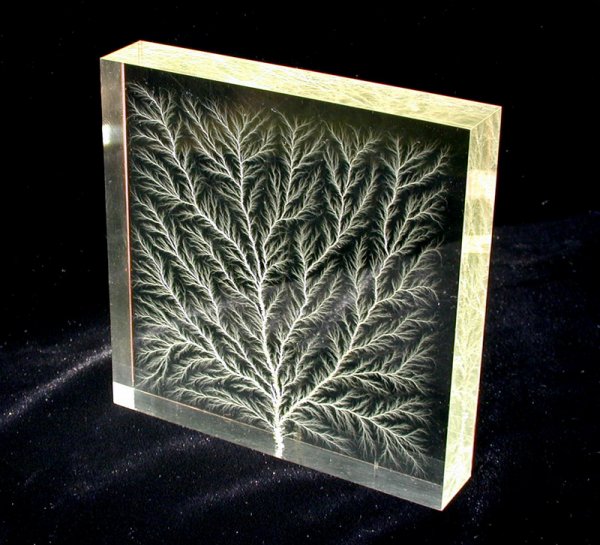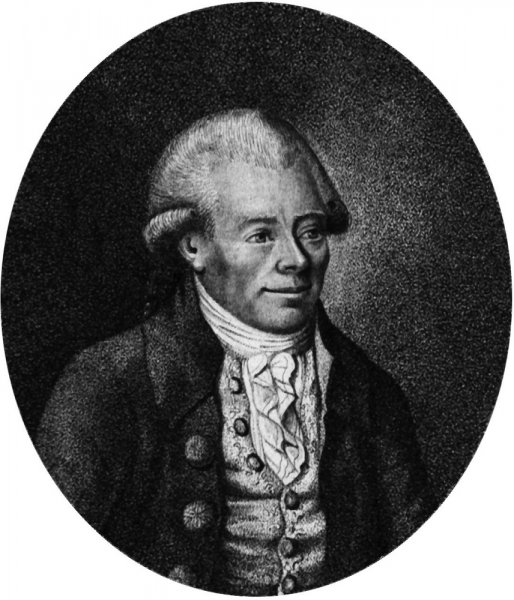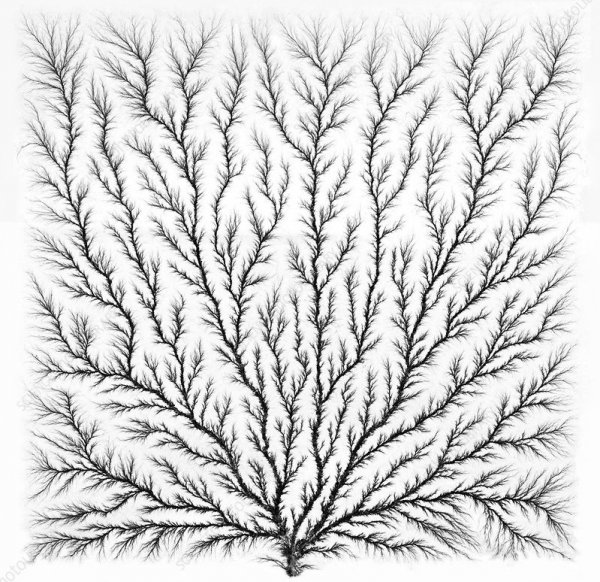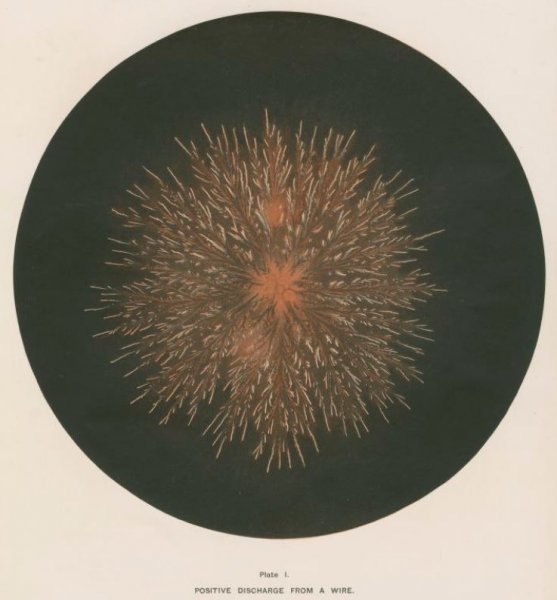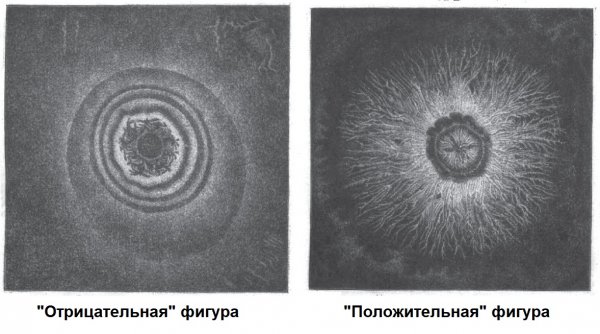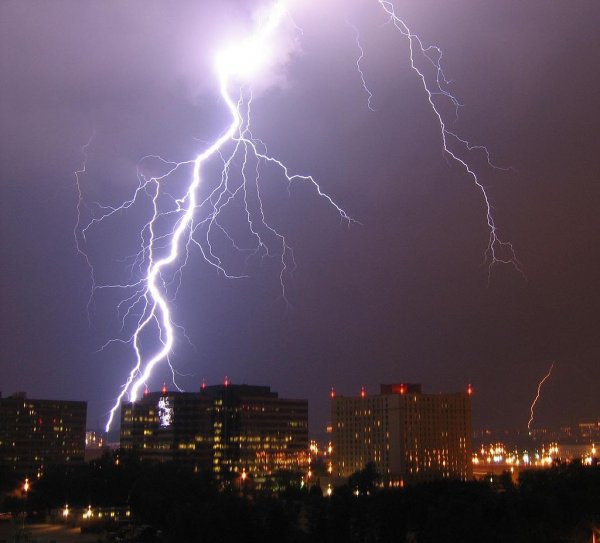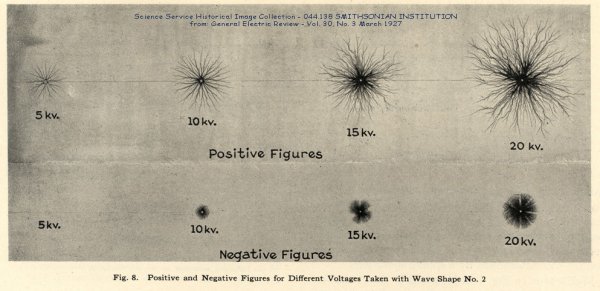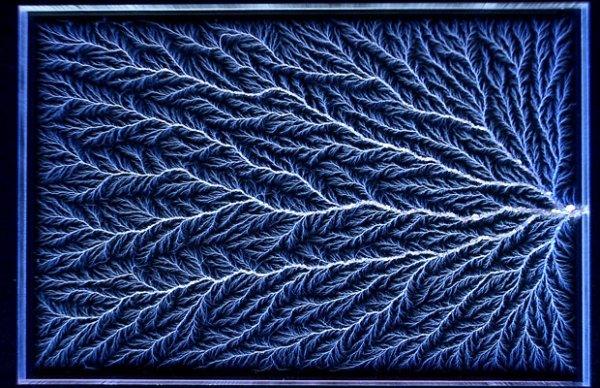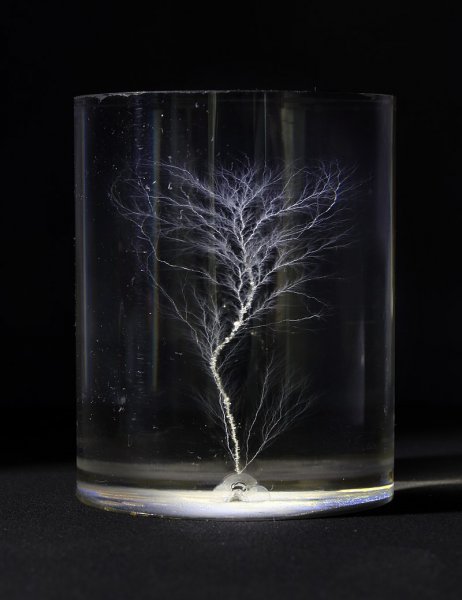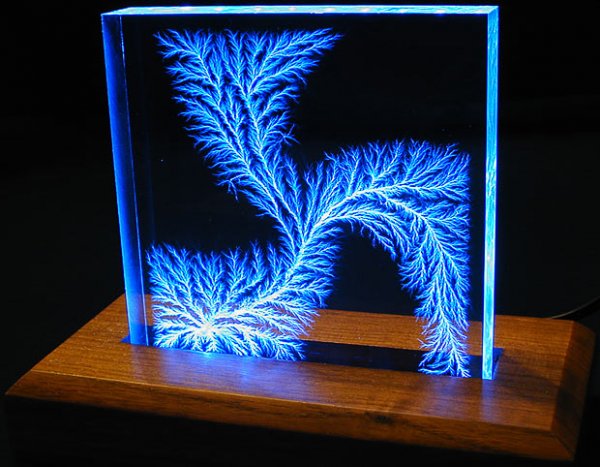Lichtenberg figures: history, physical principle of impact
Lichtenberg figures are called branched, tree-like patterns obtained by passing high-voltage electrical discharges on the surface or inside the bulk of dielectric materials.
Lichtenberg's first figures are two-dimensional, they are figures formed from dust. For the first time they were observed in 1777 by a German physicist - professor Georg Christoph Lichtenberg… Airborne dust that settled on the surfaces of electrically charged resin plates in his laboratory created these unusual patterns.
The professor demonstrated this phenomenon to his physics students, he also talked about this discovery in his memoirs. Lichtenberg wrote of this as a new method of studying the nature and motion of an electric fluid.
Something similar can be read in Lichtenberg's memoirs. “These patterns are not very different from the engraving pattern. Sometimes there appear almost countless stars, the Milky Way and the great suns. Rainbows shone on their convex side.
The result was shiny twigs similar to those that can be seen when moisture freezes on a window. Clouds of different shapes and shadows of different depths. But the biggest impression for me was that these numbers were not easy to erase because I tried to erase them by any of the usual methods.
I couldn't stop the shapes I had just erased from glowing again, brighter. I put a sheet of black paper coated with viscous material on the figures and pressed it lightly. I was thus able to make prints of figures, six of which were presented to the Royal Society.
This new type of image acquisition made me extremely happy because I was in a hurry to do other things and had neither the time nor the desire to draw or destroy all these drawings. «
In his subsequent experiments, Professor Lichtenberg used various high voltage electrostatic devices to charge the surfaces of a wide variety of dielectric materials such as resin, glass, ebonite...
He then dusted a mixture of sulfur and lead tetroxide on the charged surfaces. The sulfur (which became negatively charged by friction in the container) was more attracted to the positively charged surfaces.
Likewise, frictionally charged lead tetroxide particles that have a positive charge were attracted to negatively charged regions of the surface. The colored powders gave the previously invisible regions of surface-bound charges a clear visible shape and showed their polarity.
Thus it became clear to the professor that the charged sections of the surface were formed by small sparks. static electricity… The sparks, as they flashed across the surface of the dielectric, left separate areas of its surface electrically charged.
After appearing on the surface of the dielectric, the charges remain there for quite a long time, since the dielectric itself prevents their movement and dispersion. In addition, Lichtenberg found that the patterns of positive and negative dust values were significantly different.
The discharges produced by the positively charged high-voltage wire were star-shaped with long branching paths, while the discharges from the negative electrode were shorter, rounded, fan-shaped, and shell-like.
By carefully placing sheets of paper on the dusty surfaces, Lichtenberg discovered that he could transfer images onto paper. Thus, the modern processes of xerography and laser printing were eventually formed. He founded the physics that evolved from Lichtenberg's powder figures into modern science. on plasma physics.
Many other physicists, experimenters, and artists studied Lichtenberg's figures over the next two hundred years. Notable researchers of the 19th and 20th centuries included physicists Gaston Plante and Peter T. Riess.
At the end of the 19th century, a French artist and scientist Etienne Leopold Trouvaux created «Truvelo Figures» — now known as Lichtenberg photographic figures — using Rumkorf coil as a high voltage source.
Other researchers were Thomas Burton Kinreid and Professors Carl Edward Magnusson, Maximilian Topler, P.O. Pedersen and Arthur von Hippel.
Most modern researchers and artists have used photographic film to directly capture the faint light emitted by electrical discharges.
A wealthy English industrialist and high voltage researcher, Lord William G. Armstrong published two excellent full-color books that present some of his research on high voltage and Lichtenberg figures.
Although these books are now quite small, a copy of Armstrong's first book, Electric Motion in Air and Water with Theoretical Deductions, was made available through the kind efforts of Geoff Beharry at the Museum of Electrotherapy at the turn of the century.
In the mid-1920s, von Hippel discovered that Lichtenberg figures are actually the result of complex interactions between corona discharges, or tiny electrical sparks called streamers, and the dielectric surface below.
The electrical discharges apply corresponding "patterns" of electrical charge to the dielectric surface below, where they temporarily bond. Von Hippel also found that increasing the applied voltage or decreasing the pressure of the surrounding gas led to an increase in the length and diameter of the individual paths.
Peter Ries found that the diameter of the positive Lichtenberg figure was about 2.8 times the diameter of the negative figure obtained at the same voltage.
Relationships between the size of Lichtenberg figures as a function of voltage and polarity were used in early high voltage measurement and recording instruments, such as the clidonograph, to measure both the peak voltage and the polarity of high voltage pulses.
The clidonograph, sometimes called the "Lichtenberg camera," can photographically capture the size and shape of Lichtenberg figures caused by anomalous electrical surges. along power lines due to lightning bolts.
Clidonographic measurements enabled lightning researchers and power system designers in the 1930s and 1940s to accurately measure lightning-induced voltages, thereby providing important information about lightning's electrical characteristics.
This information allowed power engineers to create "artificial lightning" with similar characteristics in the laboratory so that they could test the effectiveness of different approaches to lightning protection. Since then, lightning protection has become an integral part of the design of all modern transmission and distribution systems.
The figure shows examples of clidonograms of positive and negative high voltage transients with different amplitudes depending on the polarity. Notice how the positive Lichtenberg figures are larger in diameter than the negative figures, while the peak voltages are of the same magnitude.
A newer version of this device, the theinograph, uses a combination of delay lines and multiple clidonograph-like sensors to capture a series of time-lapse "snapshots" of a transient, allowing engineers to capture the overall transient waveform with High voltage.
Although they were eventually superseded by modern electronic equipment, theinographs continued to be used into the 1960s to study the behavior of lightning and switching transients on high-voltage transmission lines.
It is now known that Lichtenberg figures occur during electrical breakdown of gases, insulating liquids, and solid dielectrics. Lichtenberg figures can be created in nanoseconds when a very high electrical voltage is applied to the dielectric, or they can develop over several years due to a series of small (low energy) failures.
Countless partial discharges at the surface or within solid dielectrics often create slow-growing, partially conducting 2D surface Lichtenberg figures or internal 3D electrical trees.
2D electrical trees are often found on the surface of contaminated power line insulators. 3D trees can also form in areas hidden from human vision in insulators due to the presence of small impurities or voids, or in places where the insulator is physically damaged.
Since these partially conducting trees can eventually cause complete electrical failure of the insulator, preventing the formation and growth of such "trees" at their roots is critical to the long-term reliability of all high-voltage equipment.
Lichtenberg's three-dimensional figures in clear plastic were first created by physicists Arno Brasch and Fritz Lange in the late 1940s. Using their newly discovered electron accelerator, they injected trillions of free electrons into plastic samples, causing electrical breakdown and charring in the shape of the inner Lichtenberg figure.
Electrons — small negatively charged particles that revolve around the positively charged nuclei of atoms that make up all condensed matter. Brush and Lange used high-voltage pulses from Marx's multimillion-dollar generator designed to drive a pulsed electron beam accelerator.
Their capacitor device can generate pulses of three million volts and is capable of creating a powerful discharge of free electrons with incredible peak currents of up to 100,000 amperes.
The glowing region of highly ionized air created by the outgoing high-current electron beam resembled the bluish-violet flame of a rocket engine.
The complete set of black and white images, including Lichtenberg figures in a clear plastic block, has recently become available online.

